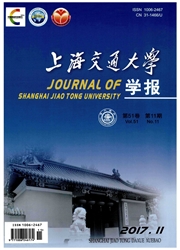

 中文摘要:
中文摘要:
基于振动声学原理提出了传统古筝的简化分析模型;建立了古筝结构的三维有限元模型,以琴弦及琴码对面板的作用力作为振动条件进行了振动频响分析,并以振动频响仿真结果作为声学边界条件建立了古筝的声学有限元模型以仿真其声学特性.结果表明,古筝结构振动的有限元仿真结果与其实验结果基本一致,所得古筝辐射声压频响曲线的主要峰值频率与结构有限元计算的结果基本一致.其中,声压频响在350-550Hz以内比350Hz之前的声辐射效率更高;古筝向上的振动声辐射量高于向下的.
 英文摘要:
英文摘要:
Based on the vibro-acoustic principle,the simplified model of traditional Guzheng was proposed.A 3-D finite element model(FEM)of the Guzheng structure was established to analyze the vibration frequency response with the force of the strings and bridge acting on the panel as the vibration condition.The acoustic FEM and its analysis were established with vibration frequency response as the acoustic boundary conditions,and the frequency response characteristics of radiated sound pressure were obtained.The results show that the simulation results of Guzheng vibration are consistent with the experiment while the peak frequency of the radiated sound pressure of Guzheng is consistent with the simulation results.The acoustic radiation efficiency between 350 and 550Hz is higher than that before 350 Hz.The upward acoustic radiation of Guzheng vibration is stronger than the downward one.
 同期刊论文项目
同期刊论文项目
 同项目期刊论文
同项目期刊论文
 期刊信息
期刊信息
